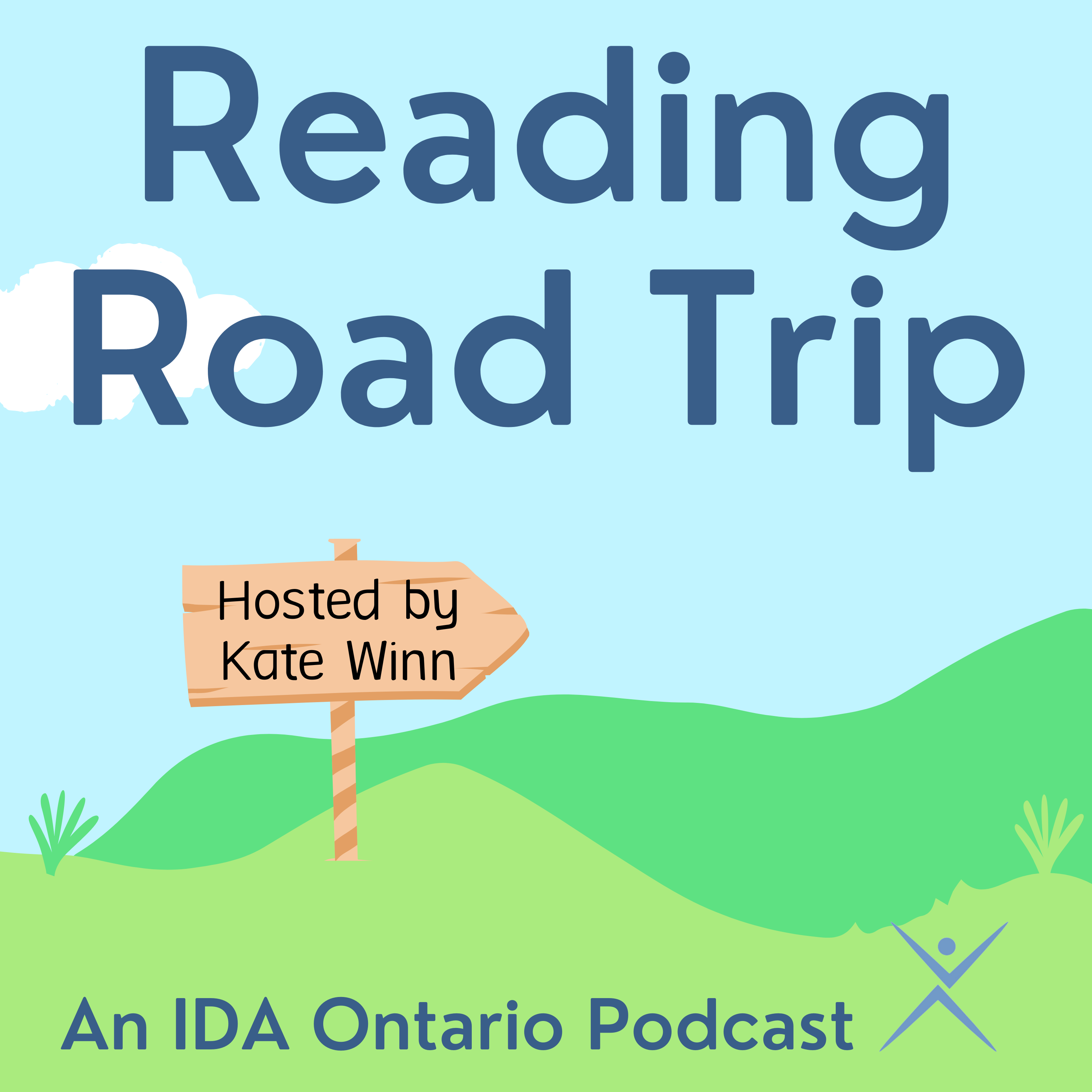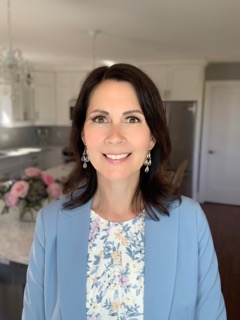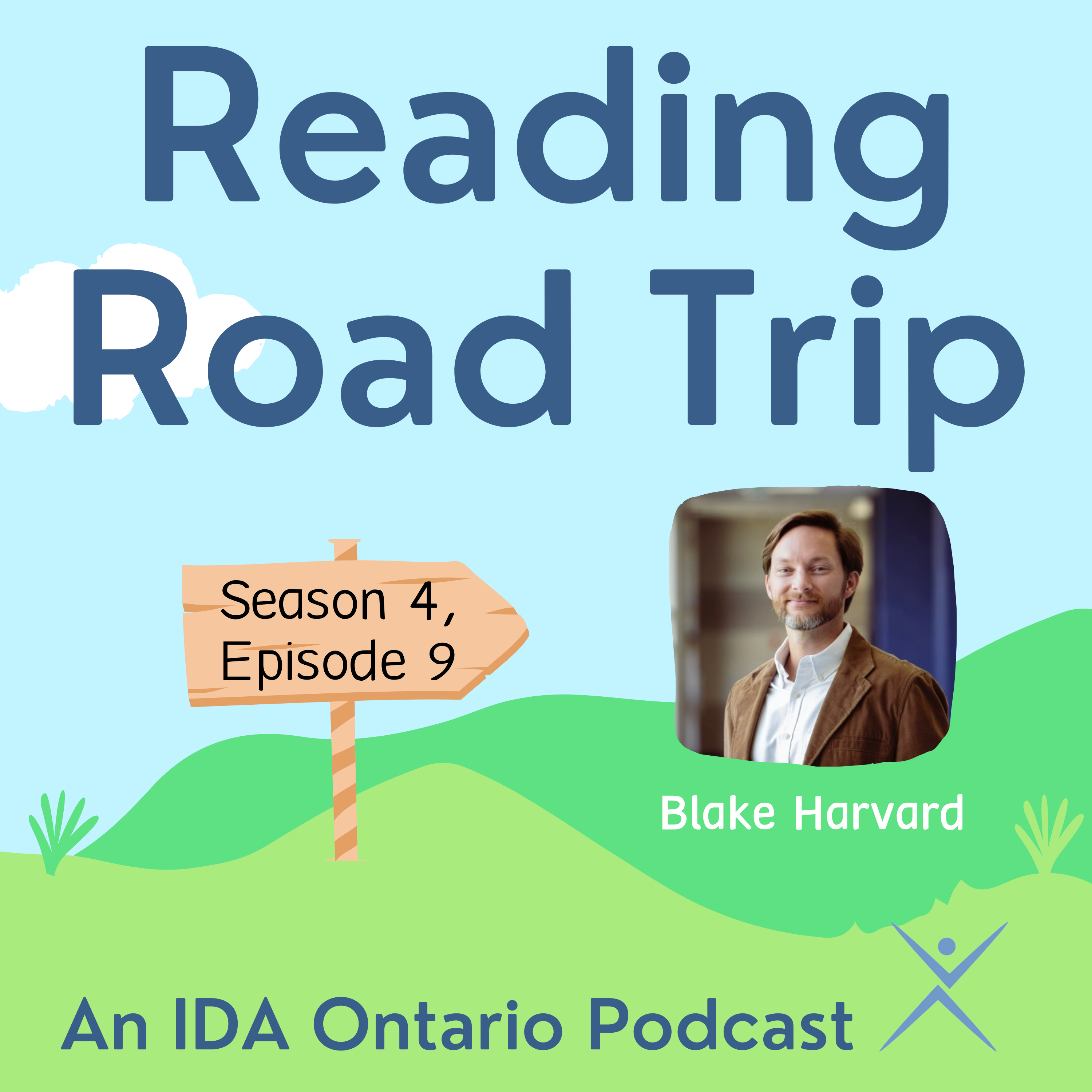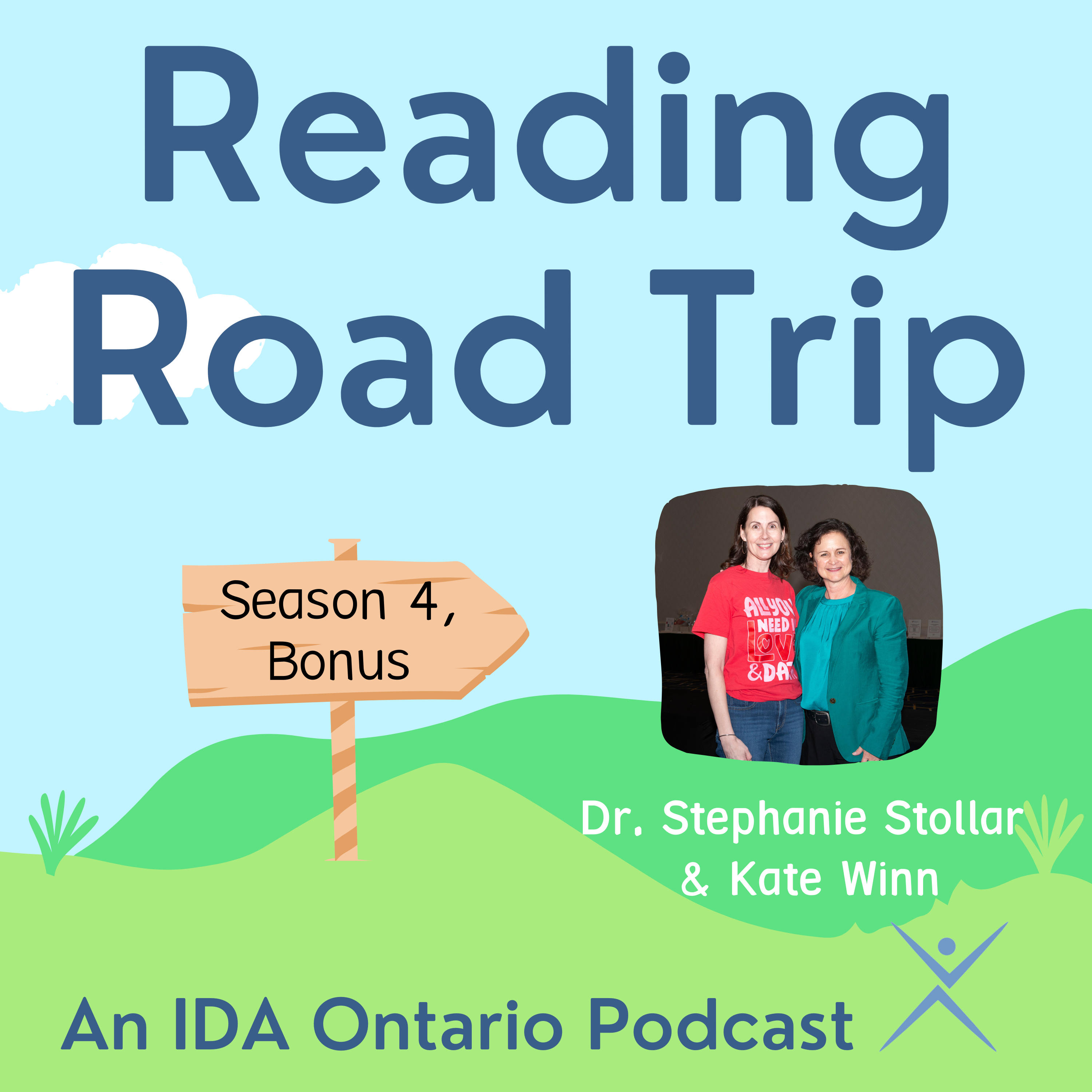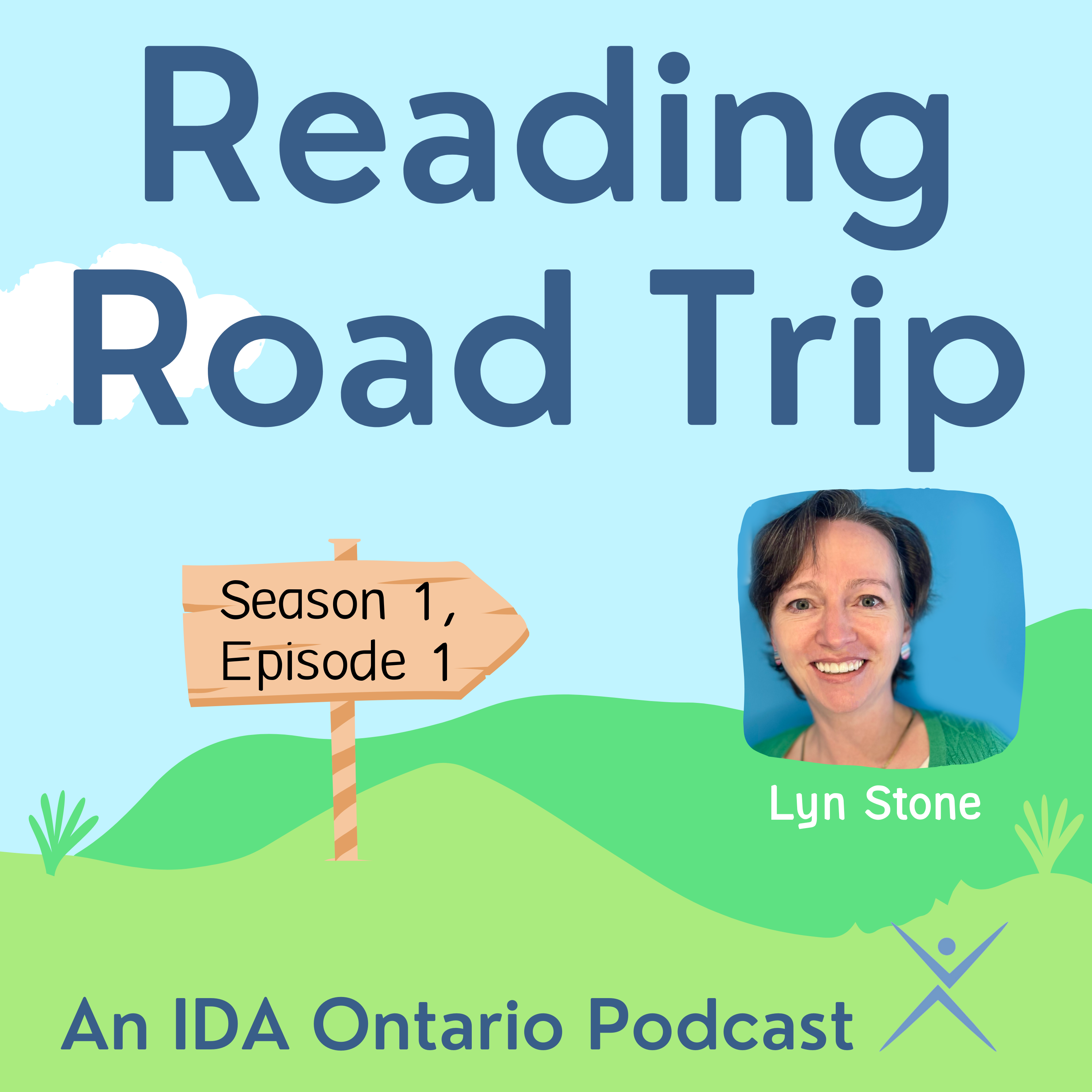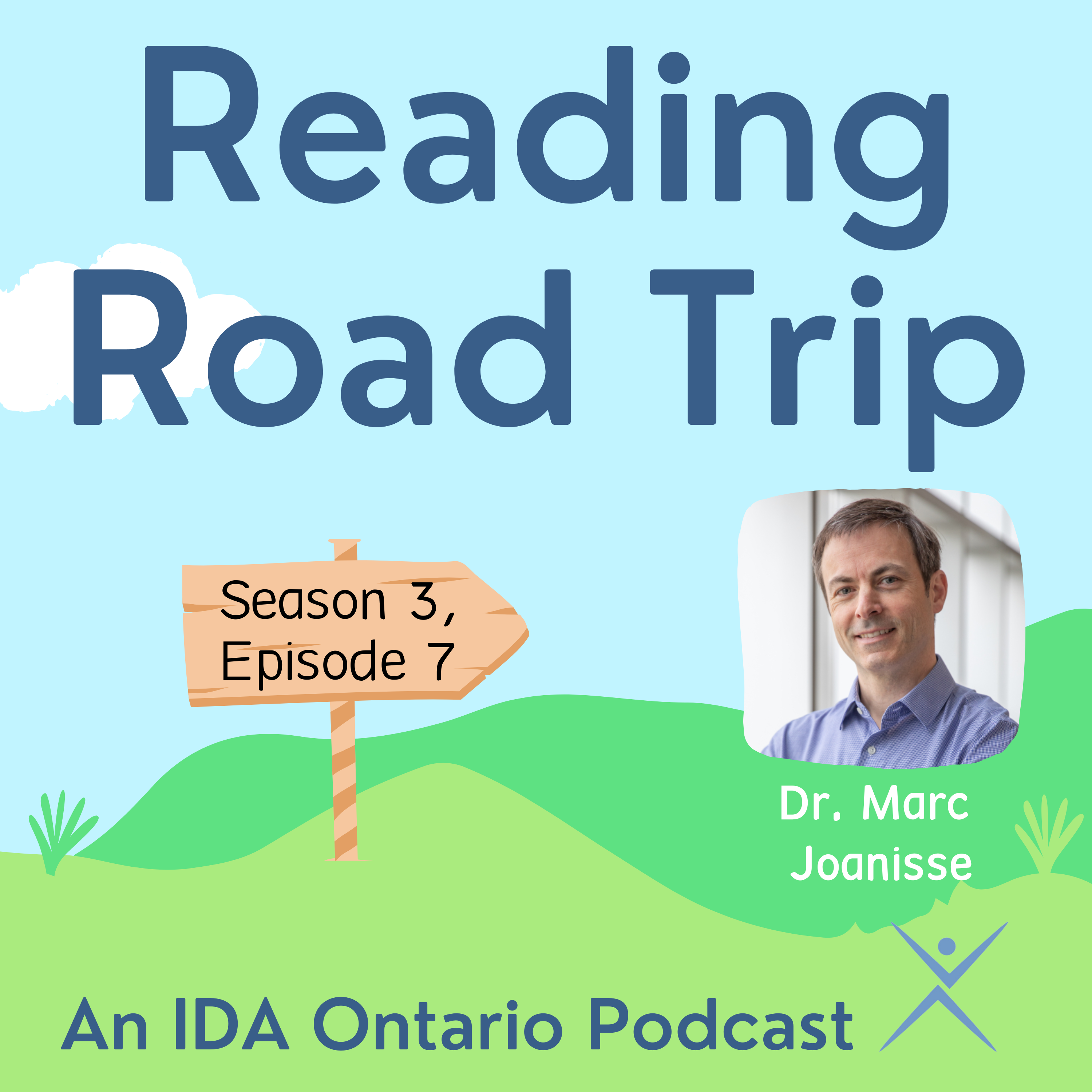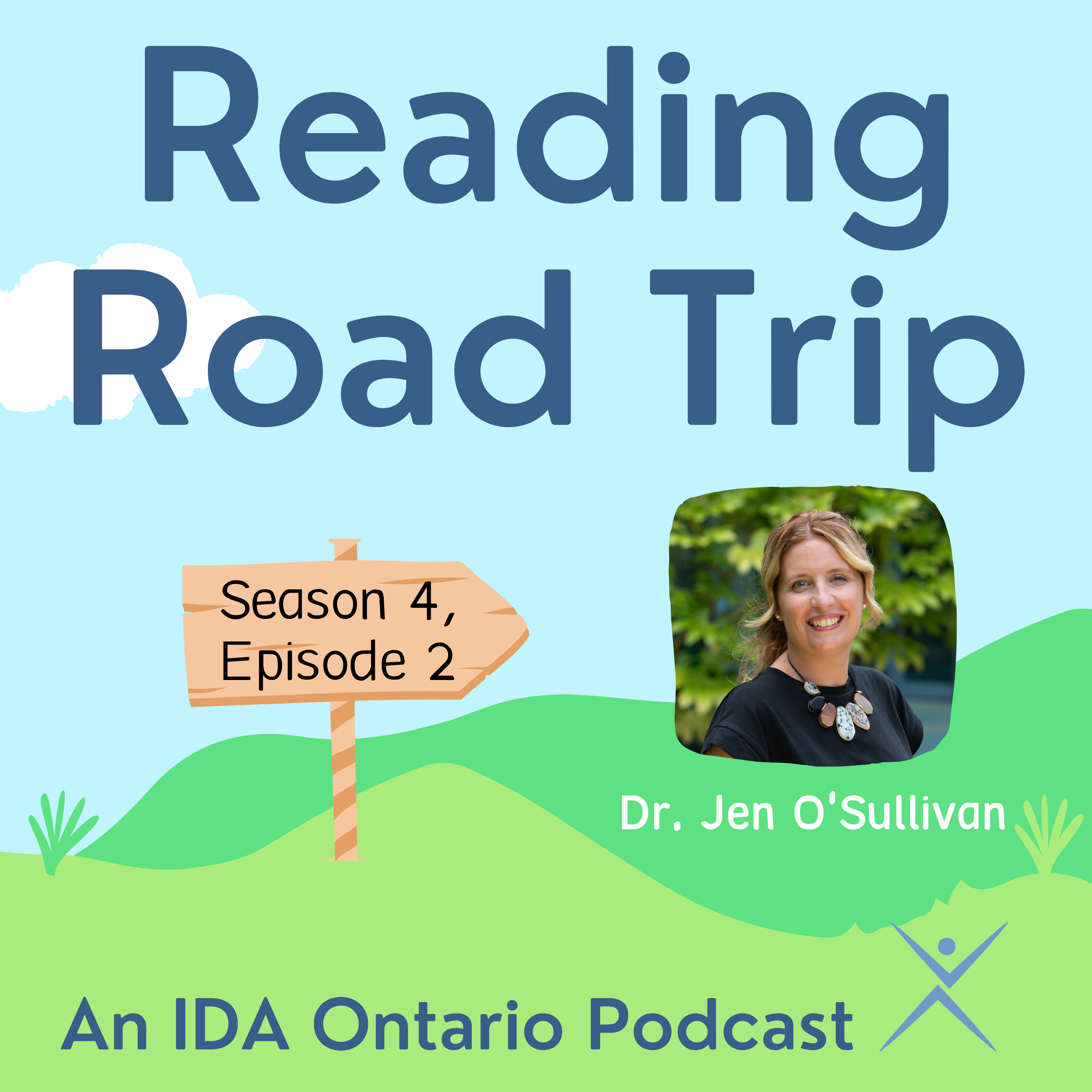Episode Transcript
[00:00:10] Kate Winn: Hello to all you travellers out there on the road to evidence-based literacy instruction. I'm Kate Winn, classroom teacher and host of IDA Ontario's podcast Reading Road Trip. Welcome to our season four finale.
Before we get started, we would like to acknowledge that we are recording this podcast from the traditional land of the Mississauga Anishinaabe.
We are grateful to live here and thank the generations of First Nations people for their care for and teachings about the Earth. We also recognize the contributions of Métis, Inuit and other Indigenous peoples in shaping our community and country.
Along with this acknowledgment and in the spirit of truth and reconciliation, we'd like to amplify the work of Indigenous artists. And today we are sharing the picture book I Sang You Down from the Stars, written by Tasha Spillett, illustrated by Michaela Goade.
Drawing from Indigenous creation stories and traditional teachings, and illustrated in dazzling watercolors, I Sang You Down from the Stars is a tribute to the bond between mother and child.
The narrator gathers gifts for a medicine bundle in anticipation of her baby's birth. A fluffy white eagle plume, bunches of cedar and sage, a quilted star blanket, and a small stone from the river.
When the baby arrives, the mother shares the bundle with her child and reveals the importance of each item inside. But when her family comes to meet the new arrival, she realizes the baby arrived with gifts of its own and that the baby is also a sacred bundle. A baby bundle.
Writing in simple, lyrical text, author Tasha Spillett draws from her cultural heritage in order to celebrate Indigenous traditions and the universal nature of a mother's love. With stunning art by the 2021 Caldecott Medal winner for We Are Water Protectors, Michaela Goade. Add this title to your home or classroom library today.
And now I'm going to throw everyone off this week by moving something I usually say at the end up to the beginning. As an avid podcast listener, I know it can be easy to hear the closing music start up and just hit stop. So I wanted to share our call to action with you before we dive into this week's fantastic content.
If you enjoy Reading Road Trip, we'd love it if you could rate and or review it in your podcast app, as this is extremely helpful for a podcast. For example, in Spotify, just tap on the name of our show, the three dots, hit rate show and give us some stars. That's it. And on Apple podcasts, when you're on the main screen for our show, you can scroll to the bottom, give us some stars, and you can also click ‘write a review’ to leave us a sentence or two. If you wish. Shout out to Shelly Ash for your recent lovely comment which made our day.
We also welcome any social media love youu feel inspired to spread as well. Feel free to tag IDA Ontario and me. My handle is thismomloves on Twitter and Facebook, Katethismomloves on Instagram and Kate Winn on Blue Sky, and I am completely serious when I say it feels like Christmas when I see someone has shared an episode of the show in their Instagram stories or reposted it on Twitter X whatever. It means so much to us that Reading Road Trip is helping educators and we really do love to hear from you. We also know many of you are sharing episodes privately with friends with schools boards. There have been some podcast clubs and discussion groups which are also fabulous ways to extend the professional learning. So thank you.
Okay listeners, you are in for a treat this week as we don't just have one guest or two or even three, I think that has been our maximum so far, but instead, we have nine experts bringing you tips for your best school year yet. Some are past guests of the show, some are new additions and they have expertise to share data, meetings, instructional routines, parent guardian communication, avoiding burnout and so much more. Let's get started.
Our first tip is to plan for team data meetings and to share more about that, Dr. Renata Archie, a contributing faculty member at the Mount St. Joseph University Graduate Reading Science Program, and a district-level MTSS specialist in a New York City public school district, is here.
[00:04:09] Renata Archie: Effective teaming practices are at the heart of the database decision-making within a well-implemented MTSS framework.
Whether you are a classroom educator, coach or school leader, consider the following as you prepare for the upcoming school year.
Various teams across the school community are necessary to ensure that screener, progress monitoring and other forms of data are interpreted and used to inform responsive instruction and interventions for students.
First, as simple as it sounds, clear teaming structures need to be established. A school community will likely have several types of teams that are responsible for reviewing student data.
At the broader school level, an instructional leadership team supports the school leader. This team is necessary to ensure the overall health of the school as a system.
They examine school-wide trends, set goals and resolve systems-level issues related to scheduling, materials and professional learning needs.
[00:05:11] Renata Archie: At the classroom or grade level, grade teams review grade level screener data, set goals, plan and decide who might deliver what supports. They may also design and implement the instructional plan.
Schools may also have additional teams that meet to consider instructional decisions for interventions delivered at the tier 2 or 3 levels of support.
These teams review progress monitoring data to determine if students are making adequate progress and if instructional support needs to be adjusted.
Before any of these teams engage in data conversations, there are several basic effective teaming practices that should be used to ensure teams are able to achieve their goals.
First, scheduling. Protected time must be allocated for each team to meet. If we are not meeting consistently, we will not be able to respond to student needs.
Second, clear roles should be established. There'll be a facilitator, a note taker, a timekeeper, and active participants.
Third, team meeting norms should be established, agreed upon, and reviewed before each meeting.
Norms ensure that the meeting is a safe space for all members to share their ideas and engage in collaborative decision-making.
Fourth, teams should use some form of running agenda and notes to keep conversations on track and safely memorialize discussion topics and next steps.
And last, communication teams must also consider how they will communicate, store, and share documents.
When it comes to how teams approach data conversations, interpretation, and decision making, consider the following it's important that team members are well informed about the assessment, scoring measures and the essential literacy skills being discussed.
Also, a data protocol should be used to guide discussions, ask questions, and help make decisions. This protocol can be something like the Outcomes-Driven Model or the Collaborative Problem-Solving model. Most problem-solving models have similar steps. They require a team to think deeply about the data before them and ask questions at each step.
First, problem identification: are there students or groups of students who need support?
Who and how many? Is it more than 20% of the student population?
Often, this step involves looking at screener data.
Second, problem analysis or validation: are we confident in our data? Do we need additional information to understand each student's instructional needs?
Often this step may involve gathering additional diagnostic data for students.
Third, we formulate a plan and implement. This can be done at the student or systems level.
What skills do students have and what are their needs? What is our plan and what is our goal? This step involves examining and responding to progress monitoring data.
Fourth, and sometimes a fifth step is where we evaluate, modify, and review.
Did our instruction or adjustments cause growth for students?
Was it effective, and how do we know?
Are they making adequate progress towards set goals, and have we met our goals? It is also at this stage that we ask other questions before we modify support for students. Have we delivered an intervention as intended?
Has attendance been an issue, or have educators received high quality training?
Before we decide that a student has not responded to instructional supports, we need to consider all these things. In closing, as a last thought, make sure your teams not only gather data, but meet in a timely fashion to interpret and respond to it. If each team grounds themselves in this question-driven model, they will work more efficiently and effectively to improve outcomes for all students.
I hope these teaming tips are helpful to your school community.
[00:09:20] Kate Winn: Thank you so much, Renata. And for more from Renata, check out season one episode six, when we had her on the show talking about universal screening for effective instruction.
Next up, Dr. Sonia Cabell, a friend of mine and past guest. This will be Sonia's third appearance on the show. She was here on our second episode of season one, talking early literacy and back again, along with Dr. Anita Archer, for our season three premiere we which was recorded live at IDA Ontario Lit Learn back in 2024. Today, she will be telling us all about the importance of keeping conversations going with our students.
[00:09:54] Sonia Cabell: Hi, I'm Sonia Cabell and I am a professor of Reading Education at Florida State University and I'm going to talk to you about continuing the conversation with your students.
Now, oral language lays an important foundation for later reading and writing.
Building children's oral language in the earliest years in the birth to age 8 period is critical for their development.
Now we learn language through the multitude of interactions and conversations that we have around us.
And it's really in the contingent responses that we get from others that really builds our oral language.
So for example, if a child says house and you say, oh the pretty house, you're expanding what children say just a little bit to give them a model of more advanced language. This continues on as children enter school.
Now, in school, a typical conversation usually is three turns. I might ask a question as the teacher, the student responds and then I might say good job and the conversation stops right there. Or I ask a question, the student responds and they're not correct. So I look for another student and I end the conversation with that student.
But what if you made a small shift and stuck with that same child just a couple of more conversational turns. In our Strive for Five framework, my colleague Dr. Tricia Zucker and I talk about how you can have conversations that go back and forth and last at least five turns with your students. You can have these strive for five conversations with students at any time in the day.
But one really good place to start is in your interactive read aloud.
Before you read aloud, ask children an open-ended guiding question, something for them to think about while you're reading.
After finishing the read-aloud, come back to that question and ask three different children that same open-ended question and have a strive for five conversation with them. It won't take too long and the other students are also going to be engaged because they know this is your regular routine.
In addition, when you pair that interactive read-aloud experience, when you when you couple that with rich text sets that build children's knowledge, you're actually having things you, that are worth talking about and so children will want to engage with you in a back-and-forth conversation.
[00:12:47] Kate Winn: Amazing advice from Dr. Sonia Cabell. Thanks Sonia. One way I've tried to keep conversations going in the kindergarten classroom is with a simple line, tell me about it. All day long kids will say, Mrs. Winn, look at this drawing or Mrs. Winn, look at what we built with the blocks. And well, I will always respond, I think, with something positive and encouraging.
Saying something like I love how you use so many colours doesn't actually extend the conversation. And of course, you don't want to say what a great castle, just to be informed it's not a castle, it's a barn.
So I find myself using tell me about it to prompt their next turn, and then that gives me something that I can scaffold as necessary from there.
Moving on now to some thoughts about the importance of instructional routines. And no better expert to speak to that topic than Dr. Pam Kastner. She is a contributing faculty member of the Mount St. Joseph University reading science doctoral program and also the President of the Reading League Pennsylvania.
[00:13:43] Pam Kastner: Hi, it's Dr. Pam Kastner, and I'm so honoired to be offering this brief summary of instructional routines for the Reading Road Trip.
So what are instructional routines?
Instructional routines are structured, clear, concise, and consistent teaching procedures designed to support the consistent delivery of instruction.
Instructional routines help both teachers and students by minimizing cognitive load and maximizing instructional efficiency and effectiveness.
What values are instructional routines for teacher practice?
First, consistency and efficiency.
Instructional routines streamline lesson delivery, making instruction more predictable and more manageable.
They support high-quality instruction. Instructional routines reduce decision-making in the moment. Routines free teachers to focus on scaffolding, monitoring, and responding to student needs.
Improving classroom management, predictable instruction routines reduce student confusion and behaviour issues, creating more time for learning, and they facilitate data collection and adjustment. Instructional routines allow for more reliable observation of student progress and instructional impact.
What are the values of instructional routines for student learning?
First and foremost, cognitive clarity and focus.
Instructional routines are familiar structures. They reduce working memory demands and they enable students to focus on the content.
There's increased engagement and participation when teachers implement instructional routines. Students know what to expect. They're more likely to engage competently and meaningfully.
They support diverse learners. Instructional routines offer explicit scaffolds that benefit all students, including English learners, those students with learning disabilities, and others who may need clear, repeated structure for success.
They promote skill mastery instructional routines through repeated practice in consistent formats, even students’ understanding and developing core skills.
Finally, why instructional routines?
As our friend Anita Archer would say, learning, learning, learning, learning, learning.
Thank you for listening to this brief summary of instructional routines for the Reading Road Trip.
[00:16:06] Kate Winn: Thank you very much, Pam. When we're planning for instruction, we always, now that we know better, keep in mind the Anita Archerism teach the stuff and cut the fluff. We asked Dr. Holly Lane, Director of the University of Florida Literacy Institute, I use and love their Foundations phonics program to share more about this.
[00:16:25] Holly Lane: One of my all-time favourite sayings from the wonderful Anita Archer is Teach the stuff and cut the fluff. This is so important, but unfortunately, it's often also forgotten by those in the trenches.
I saw this firsthand when we initially released UFLI Foundations. Immediately, many teachers saw what they perceived to be a bare bones program and thought, how can I jazz this up? I get it. UFLI is very basic.
There's a lot of stuff and not much fluff. It's natural to think that kids will be bored with the routines. However, in reality what we see is that kids are extremely motivated by the success that they can sense. From the very beginning. As teachers, so many programs were handed or lacking in some way and need to be supplemented to make them more effective or more engaging, that I think we're actually conditioned to look for ways to fluff things up. But often the stuff, the real content of the program, is enough.
In fact, sometimes trying to add to it can actually ruin it. One of our doctoral students did a study examining implementation of UFLI and she found that when teachers added things to UFLI lessons in an effort to make them more engaging, the result was actually a reduction in engagement.
This is something that I've seen in real life. Around Halloween, there was a teacher who gave her students these little rubber fingers. They look like witch fingers and monster fingers. They were adorable. They were to use these to point to the words they were reading in their passage. That's a great strategy to encourage pointing to words.
Except the students no longer cared about the passage or those words. Their attention was 100% on the funny finger, not on the words they were supposed to be reading.
I've seen so many cutesy activities being shared online or sold on sites like Teachers Pay Teachers. They claim to be aligned with UFLI, but most of them are things we would never in a million years endorse or suggest. The design of many of these activities actually are likely to hamper student progress.
The thing is, we've tested the model, and it works extremely well when it's implemented as designed.
Often the motivation for adding fluff is actually to make it more engaging for the teacher. But I think if more teachers realized that they were actually making things more difficult for their students, they would very likely take a completely different approach.
Even with the best intentions, adding fluff to a lesson can obscure the stuff that you want your students to be focused on.
So if you want your students to learn this stuff, you really need to cut the fluff.
[00:19:19] Kate Winn: Thank you, Holly. I will admit that over the last few years, I have indeed found a lot of fluff to cut from my program. And sometimes it's a concern I have about things we see being promoted and sold, especially over social media.
And I'm giving influencers the benefit of the doubt that they don't see the resources as unnecessary. They're trying to meet a need that they're seeing in the market. But just a reminder that as educators, we really do need to be discerning. Holly Lane was also on the show back in our first season, episode three, with a conversation about foundational reading skills.
Another important consideration when it comes to planning for instruction is the instructional hierarchy. Dr. Matt Burns, a researcher and professor also from UFLI, is here to break that down for us.
[00:20:01] Matt Burns: Hi, I'm Matt Burns from the University of Florida. I'm here today to talk about the instructional hierarchy, which is an extremely important concept that we don't really spend enough time on to work with children and teaching them or with anyone.
It's not unusual. I see teachers to start by challenging the students, giving them something that they've never seen before and giving them a chance to productively struggle through it.
Well, that's actually a counterproductive approach.
Decades of research starting in the 1970s have shown that our first task when teaching children is to get them accurate in order for a child to learn something. And again, I talk about child, but anybody, anybody out there, when you're learning how to drive a car, when learning how to play a sport, when you're learning how to do your taxes, whatever, you generally speaking, follow four very specific phases. You start off in the acquisition phase, which means you're slow and inaccurate, then what you can do with sufficient accuracy, generally speaking, by the way, around 90%, then we need to get you faster. So if you're slow and inaccurate, you're in that acquisition phase. But once you're accurate but slow, then you're in the fluency phase. Accurate but slow. That's those kids who count on their fingers, who read sound at a time. They can do it, but they really, really, really have to think about it.
Then once we get the kids accurate, we start practicing, practicing, practicing, practicing. I never let a kid practice something unless they can do it with at least 90% accuracy. And when they build up that practice, they can do it with sufficient speed and accuracy.
Once they can do a sufficient speed and accuracy, then they shift into the maintenance phase or the generalization phase. So once they're able to maintain it, then they can apply it.
Then they're in that generalization phase.
Teachers ask me all the time, does generalization, you know, does the speed really matter? Well, no. What matters is automaticity. You can't generalize something unless you know it's automaticity. How do we know if it's automatic speed? You do it fast. So we get the kids accurate through the acquisition phase. Then we do lots of practice, practice, practice to get them in that fluency phase to get that speed built up. Then they're in the generalization phase, and they can use that information. They can apply it. They can apply to different settings and different times. And then lastly, once they can generalize it, they can use the information to solve problems. That's the goal. But if we start off by giving a kid a problem and ask them to solve it without initial instruction, they can't do it. And it's going to be frustrating and not a productive way to learn.
So acquisition, fluency, generalization, and then lastly, adaptation or problem-solving. And we get there. Get them accurate, they're slow and inaccurate. Get them accurate. Lots of direct instruction, lots of explicit instruction, lots of feedback. Then in the proficiency, which we got to do, practice, practice, practice to build speed. Then they're in the generalization phase and work on helping them generalize it, to apply it. And then lastly, they can use the information to solve problems. Those four phases can really drive instruction. And when a kid isn't learning very well, trying to figure out where in those four phases the breakdown is occurring can be really useful information. It's called the instructional hierarchy. Four phases, four steps to success.
[00:23:30] Kate Winn: Thank you so much, Matt. And listeners, if you happen to be thinking, wait, are there three phases in the instructional hierarchy or four? Note that in some models, the generalization and adaptation phases are joined together as one, but still with the same implications for classroom practice.
Next, we have a really important tip from Dr. Jamie Metsala, a Canadian literacy researcher and professor at Mount Saint Vincent University, who's here to talk about the importance of integrating language arts with content from other curriculum areas.
[00:23:59] Jamie Metsala: Let's picture your students five or even ten years from now; the most competent readers will not only be fluent, they'll understand lots of words and complex sentences and know a lot about the natural and social world.
That means every year we need to help students increase each of these competencies.
I think one of the best ways we can do this is by integrating language arts and content area instruction.
Let me share what I think are a few key ingredients for success.
Using coherent text sets is a good first step. Multiple books and articles on a topic will help build foundational knowledge for the coming years.
For one example, our integrated unit on motion and forces for second graders included read-alouds of nonfiction books like Give It a Push, Give It a Pull, informational narratives like Newton and Me, and fiction books like Violet the Pilot. Students get repeated exposure to and talk about core concepts and vocabulary and in this case, hands-on science exploration too.
In the upper grades they'll read more of the text silently, but class-wide learning activities, discussion and instruction are all still critical.
Students writing about what they've read is also key. It's one of the best ways to help them think through and understand the content.
Of course, explicit instruction is essential, including targeting specific text and sentence structures through both reading and writing.
Be sure to mix it up. Lots of discussions, reading, writing and hands-on activities, and teach students to ask and answer their own questions about the topic. Students are curious.
This type of well-scaffolded conceptual learning is motivating. It's exciting to learn about our world and become a more competent reader and writer.
Imagine that kind of rich, focused instruction year after year.
I believe that's how we open future doors for the students in front of us today.
[00:26:08] Kate Winn: Thank you, Jamie, for that important advice. Now we're going to turn things to parent/guardian communication, especially when it comes to reading achievement and struggles. And Alicia Smith, Executive Director of Dyslexia Canada, and a parent herself, has some wise words about this.
[00:26:24] Alicia Smith: I think it's so incredibly important that parents are kept in the loop if a student is significantly below benchmark. Those parents should be hearing from you right away.
Where I live in Ontario, the screening data is reported on the February report card, but that should never be the first time that a parent is learning that their child is struggling with reading. If you've noticed something, or you're seeing on the screening data that that child is at risk or is having difficulty, make sure you talk to those parents early and often.
And when you do connect with them to have that conversation, I think it's so important that you make sure that the message doesn't come across as, hey, your child is struggling with reading. Here are a whole bunch of things that you can do at home to support your child.
Because I can say as a parent, that that can feel like an attack, and it can feel like you're saying, my child is struggling with reading because I'm a bad parent and if I had just read to them more or if I was, if I had more time to support, that everything would be okay. And parents can get really defensive if that's how they feel like the message is coming across.
So instead I'd say make sure you approach those conversations with, hey, here's what I've noticed about how your child is doing. Here's what the screening data says and here's what I'm going to do about it. Here's the plan. Here's how we're going to be supporting them at school. These are the skills that we're going to target. This is what the practice is going to look like, this is how often it's going to happen. And then once you've laid out that plan, then you can start talking about and here are the ways that you can support this at home, because absolutely we want parents to be involved and to give that kind of support.
The other thing I'd say is when you're laying out activities that parents can do with their kids at home, make sure that you're providing really good directions and if possible, examples.
So this is really important, especially if the parent isn't fluent in the language of instruction.
You know, it's one thing to send home phonics activities, but you've got to remember that most parents, most adults, don't actually have a conscious understanding of how to pronounce the individual phonemes. You know, especially not if they, especially if they don't speak that language. Like I experienced that myself when my kids were in French immersion. I remember a teacher at one point sending home an activity that consisted of a little baggie filled with cut-up bits of paper that had vowel teams on them. And we were supposed to be practicing these French vowel teams and articulating the sounds, but I had no idea. I pulled oi out of the bag and I looked at it and I was like, I'm pretty sure it probably doesn't make oy in French, but I really don't know what sound it's supposed to make. So I was kind of overwhelmed, and we did not really end up doing that activity in a meaningful way because I was afraid that I was going to get it wrong and teach things to my child that were incorrect.
So if you are sending activities home, if you can send home a video that the parents can watch so they can see how do I pronounce these things or how am I supposed to be supporting with this activity or helping my child through this or very, very clear instructions, I think that's really important.
So I guess my key takeaway is talk to parents early and often and really work to make them feel like they are a valuable part of the team that is going to be teaching their child to read this year, but that you're the captain of that team and that you have a plan and it's going to be okay.
[00:30:03] Kate Winn: That was Alicia Smith giving us lots to think about as we prepare to communicate with parents this school year.
As an avid public library user and a member of the board of my local library, I really wanted to include some tips for educators about taking advantage of all that your public library may have to offer. And so we invited Jacqueline Chartier, the Library Specialist, Outreach and Community Engagement at the City of Kawartha Lakes Public Library, to offer some tips.
[00:30:29] Jacqueline Chartier: First off, teachers can use the library to build their classroom book collections.
Whether you like to wander through the stacks and see what catches your eye, or you prefer searching for specific titles using the online catalogue, the library is your best friend.
And it's not just physical books. There are ebooks and audiobooks that are available through the library's digital collection as well.
All you need is your library card and you've got instant access to high-quality children's literature in all formats.
They're super helpful for read-alouds, independent reading time, or just keeping your classroom shelves fresh.
Secondly, our Grab and Go bags are a game-changer.
These bags are thoughtfully curated and perfect for supporting your teaching.
Grab and Go bags are filled with books on curriculum-related topics, things like science, social studies, health, and even kindergarten inquiry themes.
You'll find picture books, easy readers, and nonfiction titles that appeal to a range of reading levels.
It's a quick and easy way to build vocabulary, background knowledge and spark curiosity.
Plus, if you need help pulling some titles, library staff are a fantastic resource.
Did you know that the library can actually visit your classroom or you can organize a class trip to the library?
Whether it's just for a fun, interactive story time, hands-on STEM programming or just a tour to introduce students to what the library offers. We make it really easy.
There's even a library of things collection which includes early literacy kits and educational toys and games that you can borrow just like books.
It's such a fun way to expand your learning toolkit.
So these are my top three ways to take advantage of your local library. And honestly, they just scratched the surface.
The Kawartha Lakes Public Library is such an incredible resource for teachers and students.
If you're not already using your library card to the fullest, now's the time to dive in.
[00:32:53] Kate Winn: Thank you so much Jacqueline. Such great tips. When she mentioned our library's grab-and-go bags, it really made me think of how Sonia Cabell spoke about text sets, which is a hot term lately for a curated set of non-fiction and fiction books to support a topic. And the library can be so helpful for that. The audiobook suggestions so valuable too. I'm thinking, for example of older students who are behind in their reading, who can still access the books their friends are reading, get all of that content vocab knowledge by listening to audiobooks. And they should also, I want to remind everyone at the same time be receiving remedial reading instruction as part of their program so they eventually can read what their peers are reading. Many libraries, including mine, now have decodable books for early readers, which is great. And you know, even the idea of using the library as a physical space, a quiet place to go to plan or mark or write report cards or get books to read for your own pleasure, yes, that is allowed. And I know many libraries are also like mine where you can borrow things like park passes, life jackets. So it's not just about how they can benefit your students and your work, but also you as a person.
And on that note, our final tip comes from Dr. Todd Cunningham. Todd is a clinical and school psychologist, an associate professor and chair of the School and Clinical Child Psychology Program at University of Toronto, OISE, and we asked Todd to offer some advice to educators on how to avoid burnout this school year.
[00:34:13] Todd Cunningham: Most teachers enter the profession because they want to make a difference.
You want to help students grow, support them emotionally and academically and watch them reach their full potential. But today's classrooms are more complex than ever. Diverse learning needs, increased behavioural challenges and fewer supports can leave in the most dedicated teacher feeling stretched thin.
It's not surprising that teachers are especially vulnerable to burnout. It is a high emotional job you're constantly on, managing students' needs while juggling, planning, marking meetings and extracurricular activities. Often beyond the school day and in the shifting policies, limited control over your workload and the emotional toll of compassion, fatigue and burnout becomes a very real risk.
So how do we protect our mental health at school? Set boundaries where you can protect your break time. Prioritize tasks that truly impact students' learning.
Let go of the ideas that you need to do it all.
Lean on colleagues. Share strategies and stories helps reduce isolation outside of school. Try to maintain routines that support your well-being.
Prioritize sleep, exercise and meals.
Make time for hobbies that energize you. Spend time with loved ones and set limits on how often you check your emails at home. You deserve time to recharge and, most importantly, know when to ask for help.
If you're feeling personally exhausted, irritable, disconnected or overwhelmed, reach out.
Talk to a psychologist, medical doctor, or other mental health professional.
Seeking support isn't a sign of weakness; it's what allows you to keep showing up for your students.
Teaching is a helping profession, but you can't help others if you're running on empty.
Take care of yourself; is not optional, it is essential.
[00:36:25] Kate Winn: Thank you so much Todd, and that brings us to the end of episode 10 as well as the end of our fourth season. Show notes for this episode with all the links and information you need can be found at podcast.idaontario.com and you have been listening to season 4 episode 10.
Make sure you're following Reading Road Trips so you don't miss it when next season launches. And we just may have another bonus in-between-seasons episode for you this winter. There may be a really valuable book being released in January and I'm thinking my incredible co-producer Una may have to jump behind the microphone again to interview the two authors.
And on that note, Reading Assessment Done Right, co-authored by Stephanie Stoller and me, is now available for pre-order.
As we bring the season to a close, please know that we couldn't bring Reading Road Trip to you without behind-the-scenes support from Brittany Haynes and Melinda Jones at IDA Ontario. Thank you so much, ladies, for all of your work to support the show.
I'm Kate Winn, and along with my co-producer, Dr. Una Malcolm, we hope this episode of Reading Road Trip has made your path to evidence-based literacy instruction just a little bit clearer and a lot more fun.
